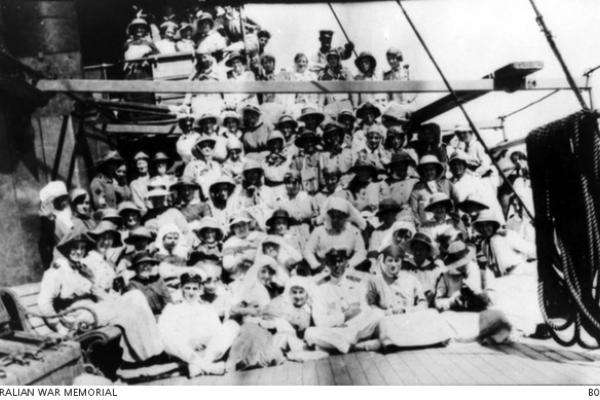The Uren family
The First World War would prove to be a test of the skills, daring, and bravery many Australian nurses. More than 2,000 women served overseas as members of the Australian Army Nursing Service (AANS) during the war, while others worked with organisations such the Queen Alexandra’s Imperial Military Nursing Service and the Red Cross.
Hand-coloured studio portrait of Sister Ethelda Runnalls Uren, c. 1915–1917. (AWM P10964.001)
In mid-1917, South Australian nurse Ethelda Uren embarked on the RMS Mooltan bound for the Mediterranean. A German-led force had captured Serbia two years earlier and the Allies were desperately trying to prevent them from advancing further south. Some 600,000 Allied servicemen were stationed in the Greek port of Salonika; nurses such as Ethelda were urgently needed to treat the sick and wounded.
45-year-old Ethelda was highly trained in her profession. She had completed her three-year minimum training at Adelaide Hospital and was working as acting principal matron for the state of South Australia when she was posted overseas. While AANS nurses were granted the status of officers, their pay was half of what their male counterparts received.
Ethelda was appointed Matron of the 60th General Hospital in Salonika, was responsible for a 90-strong nursing staff, and overall care of more than 1,560 patients. Conditions in the Mediterranean were harsh. Malaria was a constant problem in the hot summer months and the disease struck down nurses and patients alike. Winter was terribly cold and nurses wore several layers of clothing to keep warm while working in the canvas tent hospitals.
Studio portrait of Sister Catherine Temby "Kate" Uren (left) and Sister Amelia "Mill" Uren (right), c. 1915–1919. (AWM P10964.002)
Fresh water was in short supply and food was often scarce as Allied supply boats came under constant attack from German submarines. Ethelda would regularly walk over five kilometres to a nearby Greek village just to buy a few eggs. But most worrying of all were the enemy planes that flew over the hospitals. Salonika was bombed two or three times a week at first, but this grew more infrequent as time passed.
Ethelda’s younger sisters, Catherine and Amelia, were also nurses. Known as Kate and Mill, the twins were initially posted to No. 1 Australian Auxiliary Hospital at Harefield Park in London, caring for troops who had been wounded on the Western Front. Kate and Mill remained together throughout the war, later working on a hospital ship transporting patients from England to Australia.
In spite of the hardships she faced in Salonika, Ethelda devoted herself to her staff and her patients. She was later awarded the Royal Red Cross (1st Class) for her service. Ethelda returned home two weeks prior to the declaration of Armistice in November 1918, and was soon joined by Kate and Mill.
Years later, their niece Elizabeth followed in their footsteps during the Second World War. Known as Betty, she served as a captain with the AANS, tending to the sick and wounded in the Middle East and New Guinea.


